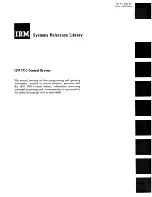
using analog inputs. For more detail on this and the digital approach being used increasingly, go to:
http://www.eflightwiki.com/eflightwiki/index.php?title=FrSky_Telemetry.
Ersky9x also supports the
Winged Shadow How Hi
unit and will accept input from DSM telemetry
when available.
The first item on the page is ‘UsrProto’, where you select between WSHhi (
Winged Shadow How Hi
),
FrHub (
FrSky Telemetry Hub
) and DSMx (
DSM2 or DSMX Telemetry
). On the same line you can
select either Metric or Imperial units.
A1 and A2 on this screen refer to the two analog inputs available on FrSky D-series receivers. These
inputs can accept a maximum of 3.3v. To measure higher voltages, therefore, a voltage divider
consisting of a pair of resistors must be used. For example, a divider with 4:1 ratio will measure
voltages up to 13.2v (4 x 3.3v).
The A1 input is normally used to measure receiver voltage. All of the FrSky D-series and X-series
receivers do this by connecting the A1 input by way of a built-in 4:1 divider.
The A2 port does not provide an internal voltage divider. Consequently, to measure voltages above
3.3v, an external divider must be used as a voltage sensor. For example, to measure the voltage of
a 4-cell LiPo battery (maximum 16.8v fully charged), a 6:1 divider can be used; this will accept
voltages up to 6 x 3.3v = 19.8v. With such a divider, 16.8v will be seen as 16.8v/6 = 2.8v as input to
the receiver telemetry.
Note that the FrSky X8R receivers only have only one analog input, A1, which is connected
internally to measure the voltage of the receiver power supply. A converter is available to enable
analog inputs (A2) to the digital S.Port of the X8R. The X6R receivers have an external A1 port like
that on most D-series receivers.
Within the telemetry circuits of the receiver, the value of the analog input (between 0 and 3.3v) is
converted to a number between 0 and 255. This is encoded digitally and sent to the transmitter,
where it is converted back to a number representing the voltage (to do this the transmitter must be
given the divider ratio).
In the screen shot above, the numbers immediately to the right of “A1 channel” and “A2 channel”
represent the measurement
Range
, which depends on the divider ratio of the voltage sensor. For
the 4:1 ratio used to measure receiver voltage, this value should be set to 13.2 (i.e., 3.3 x 4). For a
6:1 ratio sensor, the range would be 19.8.
The number in the right hand column (5.2 in the picture) represents the final
Telemetry
read-out. If it
does not agree exactly with the actual value measured with a voltmeter, the range value can be
adjusted slightly. The usual cause of inaccuracies in the reading is the tolerance of the resistors
used in the voltage divider.
Ersky9x Explained – version 1
page
37
of 45









































